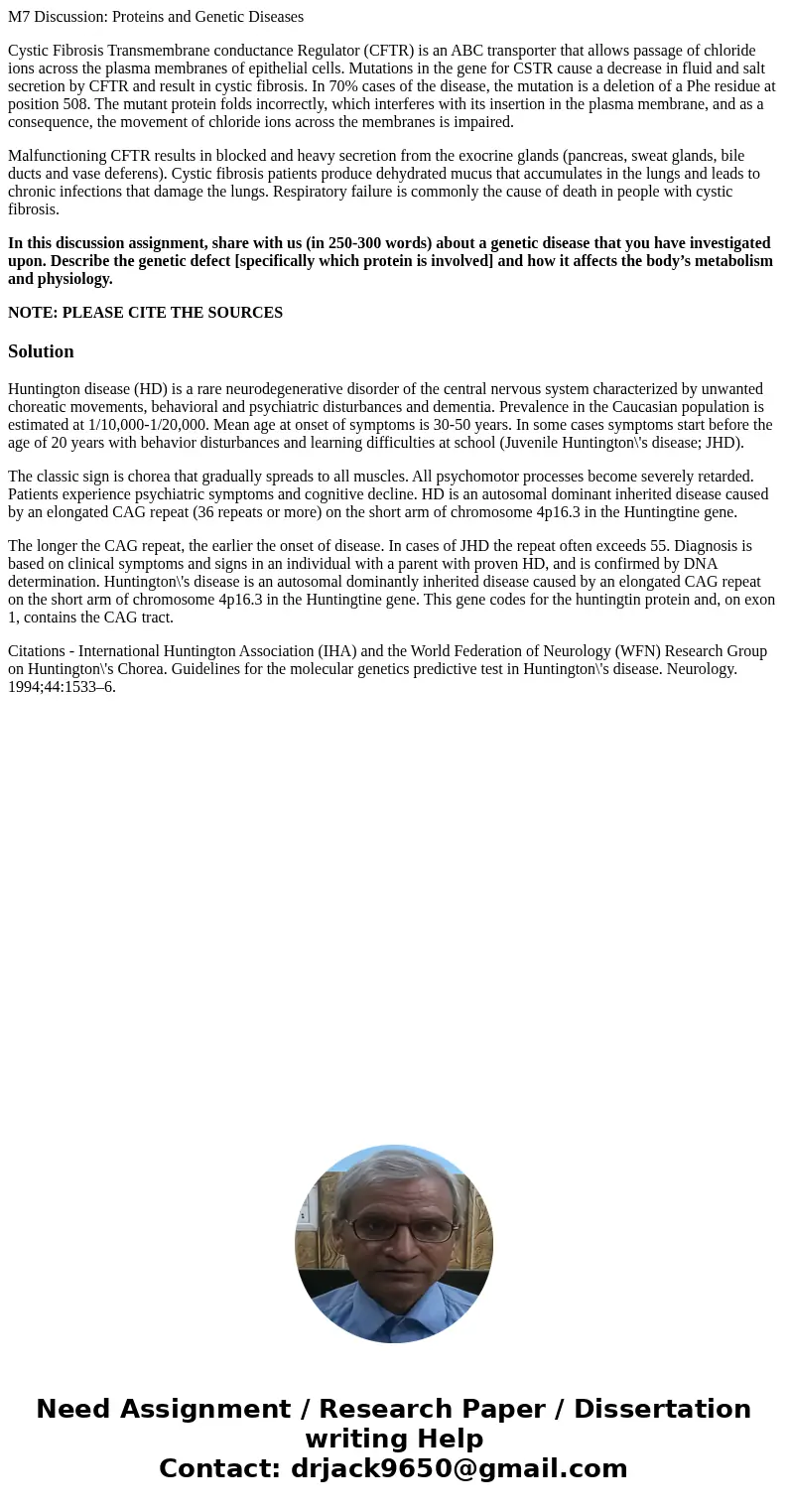M7 Discussion Proteins and Genetic Diseases Cystic Fibrosis
M7 Discussion: Proteins and Genetic Diseases
Cystic Fibrosis Transmembrane conductance Regulator (CFTR) is an ABC transporter that allows passage of chloride ions across the plasma membranes of epithelial cells. Mutations in the gene for CSTR cause a decrease in fluid and salt secretion by CFTR and result in cystic fibrosis. In 70% cases of the disease, the mutation is a deletion of a Phe residue at position 508. The mutant protein folds incorrectly, which interferes with its insertion in the plasma membrane, and as a consequence, the movement of chloride ions across the membranes is impaired.
Malfunctioning CFTR results in blocked and heavy secretion from the exocrine glands (pancreas, sweat glands, bile ducts and vase deferens). Cystic fibrosis patients produce dehydrated mucus that accumulates in the lungs and leads to chronic infections that damage the lungs. Respiratory failure is commonly the cause of death in people with cystic fibrosis.
In this discussion assignment, share with us (in 250-300 words) about a genetic disease that you have investigated upon. Describe the genetic defect [specifically which protein is involved] and how it affects the body’s metabolism and physiology.
NOTE: PLEASE CITE THE SOURCES
Solution
Huntington disease (HD) is a rare neurodegenerative disorder of the central nervous system characterized by unwanted choreatic movements, behavioral and psychiatric disturbances and dementia. Prevalence in the Caucasian population is estimated at 1/10,000-1/20,000. Mean age at onset of symptoms is 30-50 years. In some cases symptoms start before the age of 20 years with behavior disturbances and learning difficulties at school (Juvenile Huntington\'s disease; JHD).
The classic sign is chorea that gradually spreads to all muscles. All psychomotor processes become severely retarded. Patients experience psychiatric symptoms and cognitive decline. HD is an autosomal dominant inherited disease caused by an elongated CAG repeat (36 repeats or more) on the short arm of chromosome 4p16.3 in the Huntingtine gene.
The longer the CAG repeat, the earlier the onset of disease. In cases of JHD the repeat often exceeds 55. Diagnosis is based on clinical symptoms and signs in an individual with a parent with proven HD, and is confirmed by DNA determination. Huntington\'s disease is an autosomal dominantly inherited disease caused by an elongated CAG repeat on the short arm of chromosome 4p16.3 in the Huntingtine gene. This gene codes for the huntingtin protein and, on exon 1, contains the CAG tract.
Citations - International Huntington Association (IHA) and the World Federation of Neurology (WFN) Research Group on Huntington\'s Chorea. Guidelines for the molecular genetics predictive test in Huntington\'s disease. Neurology. 1994;44:1533–6.

 Homework Sourse
Homework Sourse